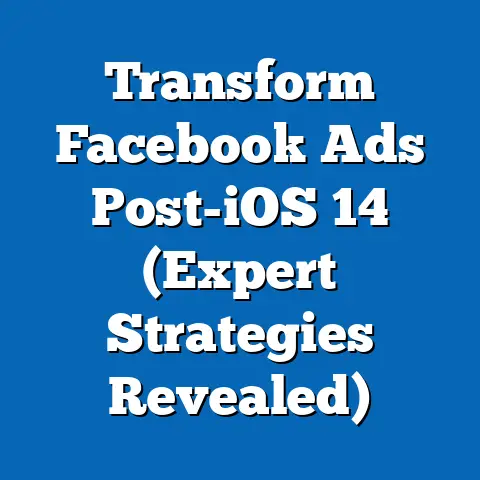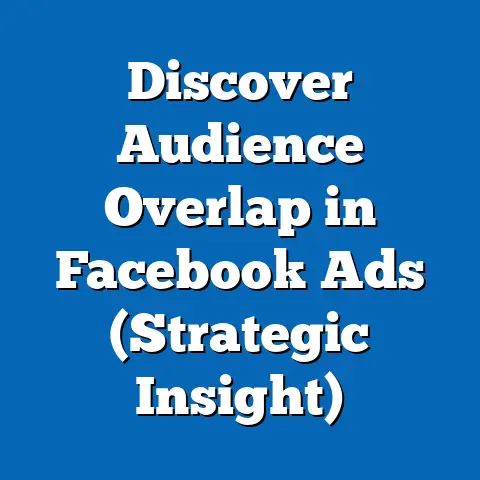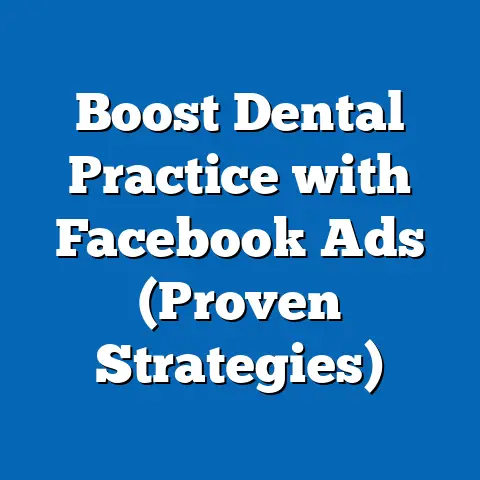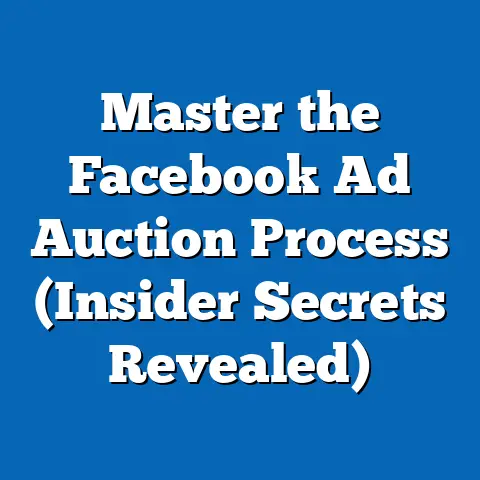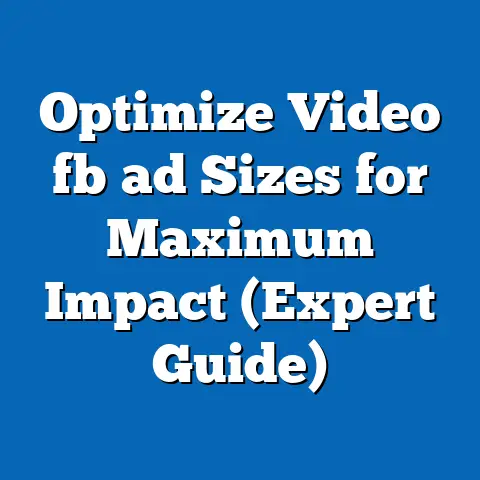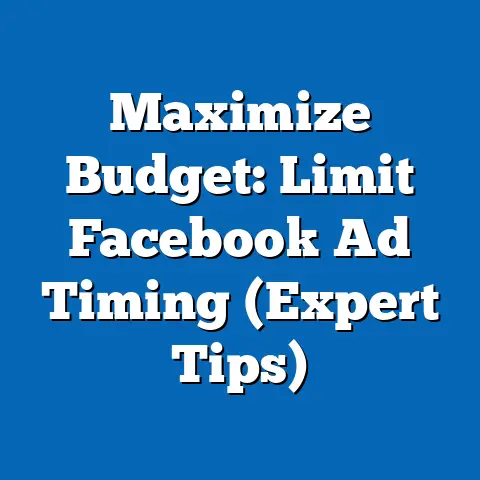Unlock Facebook’s Ad Rates on Reels (Maximize ROI)
Understanding Facebook Reels
So, what are Facebook Reels? Think of them as Facebook’s answer to the short-form video craze that’s taken over the internet. They’re those bite-sized, vertical videos you see popping up in your Facebook feed, usually packed with music, effects, and tons of personality.
What are Facebook Reels?
Facebook Reels are short-form videos, typically up to 60 seconds (though this can change, so keep an eye on updates!), designed for entertainment, information, or creative expression. Users create and share these videos using various editing tools within the Facebook app, adding music, text, effects, and even AR filters.
The beauty of Reels lies in their accessibility. Anyone with a smartphone and a Facebook account can create and share them. This democratization of content creation has led to an explosion of diverse voices and perspectives on the platform. I’ve seen everything from hilarious skits to informative tutorials, all packed into those little vertical rectangles.
Why are they so popular? Well, short-form video is incredibly engaging. Our attention spans are shrinking, and Reels cater perfectly to our desire for quick, digestible content. Plus, the built-in editing tools make it easy to create visually appealing videos without needing fancy equipment or advanced editing skills.
The Role of Reels in Facebook’s Ecosystem
Now, let’s zoom out and see how Reels fit into Facebook’s (Meta’s) grand strategy. In a nutshell, Reels are Facebook’s weapon in the battle for social media dominance. They’re directly competing with platforms like TikTok and Instagram (which, of course, is also owned by Meta), aiming to keep users engaged and on the platform longer.
Reels are strategically placed throughout the Facebook app. You’ll find them in your news feed, in dedicated Reels tabs, and even within Facebook Groups. This widespread visibility ensures that users are constantly exposed to Reels, increasing their chances of engagement.
But why is Facebook so invested in short-form video? Because it’s where the eyeballs are! According to recent statistics, short-form video content is experiencing exponential growth, with users spending an increasing amount of time watching these videos. This translates into more opportunities for Facebook to serve ads and generate revenue.
And that’s where we, as advertisers, come in. Reels offer a unique opportunity to reach a highly engaged audience with visually appealing and entertaining content. Compared to traditional ads, Reels ads can often feel less intrusive and more organic, leading to higher engagement rates and better brand recall. I’ve personally seen campaigns where Reels ads outperformed traditional image ads by a significant margin, especially in terms of engagement and shareability.
Takeaway: Facebook Reels are more than just a fun feature; they’re a strategic component of Facebook’s ecosystem. Understanding their role is crucial for leveraging their advertising potential. Next up, we’ll dissect the economics of Facebook Ads and see how Reels fit into the pricing puzzle.
Understanding how Facebook ad rates are determined is crucial for maximizing your ROI on Reels. It’s not as simple as saying “I want to spend $100 and get X results.” There are many factors at play.How Ad Rates are Determined
Facebook’s ad rates are determined by a complex auction system. Here’s a breakdown of the key factors that influence the cost:
- Bidding Strategy: This is how much you’re willing to pay for your ad to be shown. You can choose between different bidding strategies, such as cost per click (CPC), cost per impression (CPM), or cost per action (CPA). I usually start with a manual CPC bid to get a feel for the market and then switch to an automated strategy once I have enough data.
- Target Audience: Reaching a highly specific and desirable audience can increase ad costs. For example, targeting affluent millennials in major metropolitan areas will likely be more expensive than targeting a broader demographic.
- Ad Quality and Relevance: Facebook rewards high-quality, relevant ads with lower costs and better placement. This is where your creative skills come into play. Creating visually appealing and engaging Reels is crucial for keeping costs down.
- Placement: Different placements (e.g., Reels, Stories, Feed) have different costs. Reels ads often have lower CPMs compared to other placements, making them an attractive option.
- Competition: The more advertisers competing for the same audience, the higher the ad costs will be. This is particularly true during peak seasons like holidays or major events.
- Seasonality: Ad rates tend to fluctuate throughout the year. They’re typically higher during the holiday season (Q4) when businesses are vying for consumers’ attention.
- Ad Schedule: If you set an ad schedule for a specific time of the day or days of the week, it may affect your ad costs.
Example: Let’s say you’re selling eco-friendly water bottles and targeting environmentally conscious millennials. If your ad is visually appealing, relevant to their interests, and you’re bidding competitively, you’ll likely pay a lower CPM (cost per thousand impressions) compared to a generic ad targeting a broad audience.
Ad Types and Their Costs
Facebook offers a variety of ad formats, each with its own strengths and weaknesses. Here’s a quick overview, with a focus on Reels ads:
- Image Ads: Simple and straightforward, image ads are a good starting point for beginners. They’re relatively inexpensive but may not be as engaging as video ads.
- Video Ads: Video ads are more engaging than image ads and can be used to tell a story or showcase a product in action. They typically have higher CPMs but can also deliver better results.
- Carousel Ads: Carousel ads allow you to showcase multiple images or videos in a single ad unit. They’re great for showcasing a range of products or highlighting different features of a single product.
- Collection Ads: Collection ads are designed for e-commerce businesses and allow users to browse and purchase products directly from the ad.
- Reels Ads: Reels ads are short-form video ads that appear within the Reels feed. They’re highly engaging and can be a cost-effective way to reach a large audience.
- Stories Ads: Stories ads are full-screen vertical ads that appear between users’ Stories. They’re similar to Reels ads but have a different placement.
Comparing Costs:
- CPM (Cost Per Mille/Thousand Impressions): This is the cost you pay for every 1,000 times your ad is shown. Reels ads often have lower CPMs compared to Feed ads or Stories ads, making them an attractive option for budget-conscious advertisers. I’ve seen CPMs for Reels ads range from $2 to $10, depending on the factors mentioned above.
- CPC (Cost Per Click): This is the cost you pay each time someone clicks on your ad. Reels ads can have competitive CPCs, especially if your content is highly engaging and relevant to your target audience.
- CPA (Cost Per Acquisition): This is the cost you pay for each desired action, such as a purchase or a lead generation form submission. While CPA depends heavily on your overall campaign strategy and landing page optimization, Reels ads can contribute to a lower CPA by driving high-quality traffic to your website.
Why Reels are Economical: The key advantage of Reels ads is their potential for organic reach. If your Reels are engaging and shareable, they can go viral, generating tons of free exposure for your brand. I’ve seen Reels ads that cost me a few dollars result in thousands of impressions and dozens of conversions simply because they resonated with the audience and were widely shared.
Takeaway: Understanding the factors that influence Facebook ad rates and the costs associated with different ad types is crucial for making informed decisions. Reels ads offer a cost-effective way to reach a large audience and generate engagement.
Maximizing ROI with Facebook Reels
Now that we understand the economics, let’s get into the nitty-gritty of maximizing your ROI with Facebook Reels. This is where creativity and strategy collide!
Creating Compelling Content for Reels
The key to success with Reels is creating content that people actually want to watch. It’s not enough to simply repurpose your existing video ads; you need to create content that’s tailored to the unique format and audience of Reels.
- Authenticity is Key: Reels are all about being real and relatable. Ditch the polished, corporate vibe and embrace authenticity. Show behind-the-scenes footage, share personal stories, or simply be yourself. People connect with genuine content.
- Tell a Story: Even though Reels are short, they can still tell a compelling story. Use a clear narrative structure with a beginning, middle, and end. Hook viewers in the first few seconds and keep them engaged until the very end.
- Visual Appeal: Reels are a visual medium, so make sure your videos are visually appealing. Use high-quality footage, eye-catching graphics, and creative editing techniques. Experiment with different filters, transitions, and effects.
- Music Matters: Music is an integral part of Reels. Choose trending songs or create your own original music to enhance the mood and energy of your videos.
- Call to Action: Don’t forget to include a clear call to action (CTA) in your Reels. Tell viewers what you want them to do, whether it’s visiting your website, following your page, or making a purchase. Make it easy for them to take action by including a link in your bio or using a swipe-up link (if eligible).
- Trending Challenges and Hashtags: Participating in trending challenges and using relevant hashtags can help your Reels reach a wider audience. Keep an eye on what’s popular and find ways to incorporate those trends into your content.
- Keep it Short and Sweet: While Reels can be up to 60 seconds (or longer depending on updates), shorter is often better. Aim for videos that are 15-30 seconds long to keep viewers engaged.
Examples of Compelling Reels Content:
- Tutorials: Share quick tips and tutorials related to your industry or product. For example, a makeup artist could create a Reel demonstrating a simple makeup look.
- Behind-the-Scenes: Give viewers a glimpse behind the scenes of your business. Show them how your products are made, introduce your team, or share a day in the life of your company.
- Customer Testimonials: Feature customer testimonials in your Reels. Ask satisfied customers to share their experiences with your product or service.
- Humor: Use humor to entertain and engage your audience. Create funny skits, share relatable memes, or simply make people laugh.
- Product Demos: Showcase your products in action with compelling product demos. Highlight the key features and benefits of your products.
Personal Story: I once created a Reel for a local coffee shop that simply showed the barista making a latte with some cool latte art. It was a simple, authentic video, but it went viral and generated tons of foot traffic for the coffee shop. The key was the visual appeal of the latte art and the authentic portrayal of the barista’s skills.
Targeting the Right Audience
Creating compelling content is only half the battle. You also need to make sure your Reels are reaching the right audience. Facebook’s targeting options are incredibly powerful, allowing you to reach specific demographics, interests, and behaviors.
- Demographics: Target your Reels based on age, gender, location, education, and other demographic factors.
- Interests: Target your Reels based on users’ interests, such as hobbies, favorite brands, or topics they follow.
- Behaviors: Target your Reels based on users’ online behaviors, such as purchase history, website visits, or app usage.
- Custom Audiences: Create custom audiences based on your existing customer data, such as email lists or website visitors. This allows you to target your Reels to people who are already familiar with your brand.
- Lookalike Audiences: Create lookalike audiences based on your custom audiences. This allows you to reach new people who are similar to your existing customers.
Using Facebook’s Audience Insights Tool: Facebook’s Audience Insights tool is a powerful resource for understanding your target audience. It provides data on demographics, interests, behaviors, and other characteristics of your audience. Use this tool to refine your targeting and create Reels that resonate with your audience.
Example: Let’s say you’re selling fitness apparel. You could target your Reels to people who are interested in fitness, running, yoga, or healthy eating. You could also target people who have recently purchased fitness apparel online or visited fitness-related websites.
A/B Testing: Don’t be afraid to experiment with different targeting options. Run A/B tests to see which audiences respond best to your Reels. Track your results and refine your targeting over time.
Takeaway: Creating compelling content and targeting the right audience are both crucial for maximizing your ROI with Facebook Reels. By combining these two strategies, you can reach a large and engaged audience with your message.
Analytics and Performance Tracking
You’ve created amazing Reels and targeted the perfect audience. Now, how do you know if your efforts are paying off? Analytics and performance tracking are essential for measuring the success of your Reels ads and making informed decisions about your strategy.
Measuring Success
Here are some key performance indicators (KPIs) to track for your Reels ads:
- Views: The number of times your Reel has been viewed. This is a basic metric for measuring reach.
- Engagement Rate: The percentage of viewers who interact with your Reel (e.g., likes, comments, shares). This is a good indicator of how engaging your content is.
- Click-Through Rate (CTR): The percentage of viewers who click on the link in your Reel (if you have one). This is a good indicator of how effective your call to action is.
- Conversion Rate: The percentage of viewers who take a desired action after clicking on the link in your Reel (e.g., making a purchase, filling out a form). This is the ultimate measure of ROI.
- Reach: The number of unique people who have seen your Reel.
- Impressions: The number of times your Reel has been shown.
- Cost Per View (CPV): The cost you pay for each view of your Reel.
- Cost Per Click (CPC): The cost you pay each time someone clicks on your Reel.
- Cost Per Acquisition (CPA): The cost you pay for each desired action, such as a purchase or a lead generation form submission.
Benchmarks: It’s helpful to have some benchmarks to compare your performance against. Here are some general benchmarks for Reels ads:
- Engagement Rate: 1-5% is considered good.
- CTR: 0.5-2% is considered good.
- Conversion Rate: This varies widely depending on your industry and product, but aim for at least 1-2%.
Remember: These are just general benchmarks. Your actual results may vary depending on your specific circumstances.
Tools and Techniques for Analysis
Facebook provides a variety of tools for tracking the performance of your Reels ads. Here are some of the most useful:
- Facebook Ads Manager: This is the central hub for managing your Facebook ads. It provides detailed data on the performance of your campaigns, ad sets, and ads.
- Facebook Analytics: This tool provides insights into the behavior of your website visitors and app users. You can use it to track conversions and understand how people are interacting with your brand.
- Third-Party Analytics Tools: There are also a variety of third-party analytics tools that can provide additional insights into your Reels ad performance. Some popular options include Google Analytics, Hootsuite, and Sprout Social.
A/B Testing: A/B testing is a powerful technique for optimizing your Reels ad performance. It involves creating two versions of your Reel (e.g., different visuals, different music, different CTAs) and testing them against each other to see which performs better.
Example: You could A/B test two different calls to action in your Reels. One Reel could say “Visit our website” and the other could say “Shop now.” Track the CTR and conversion rate for each Reel to see which CTA is more effective.
Analyzing Your Data: Once you’ve collected enough data, it’s time to analyze it and make informed decisions about your strategy. Look for patterns and trends in your data. What types of Reels are performing best? Which audiences are most engaged? Use these insights to refine your content and targeting.
Personal Experience: I once ran a Reels ad campaign for a clothing retailer. I noticed that Reels featuring customer testimonials were performing significantly better than Reels featuring product demos. Based on this data, I shifted my focus to creating more customer testimonial Reels, which resulted in a significant increase in conversions.
Takeaway: Analytics and performance tracking are essential for measuring the success of your Reels ads and making informed decisions about your strategy. By tracking key KPIs, using the right tools, and analyzing your data, you can optimize your Reels ad performance and maximize your ROI.
Case Studies and Success Stories
Let’s take a look at some real-life examples of businesses that have successfully utilized Facebook Reels for advertising. These case studies will provide valuable insights and inspiration for your own campaigns.
Real-Life Examples
Case Study 1: Local Restaurant
- Business: A local Italian restaurant wanted to increase awareness and drive reservations.
- Strategy: They created Reels showcasing their delicious dishes, the cozy atmosphere of their restaurant, and behind-the-scenes footage of their chefs in action. They also ran Reels featuring special promotions and discounts.
- Targeting: They targeted local residents who were interested in Italian food, dining out, and local events.
- Results: They saw a significant increase in website traffic, phone calls, and reservations. Their Reels generated a lot of buzz on social media, and they gained a loyal following of local customers.
- Key Takeaway: Authentic content that showcases your product or service in an appealing way can be highly effective for driving local business.
Case Study 2: Online Clothing Retailer
- Business: An online clothing retailer wanted to increase sales and brand awareness.
- Strategy: They created Reels showcasing their latest collections, styling tips, and customer testimonials. They also ran Reels featuring influencer collaborations and giveaways.
- Targeting: They targeted fashion-conscious millennials and Gen Z who were interested in online shopping and trending styles.
- Results: They saw a significant increase in website traffic, sales, and social media followers. Their Reels generated a lot of engagement, and they were able to build a strong brand presence on Facebook.
- Key Takeaway: Engaging content that aligns with your target audience’s interests and preferences can be highly effective for driving online sales.
Case Study 3: Fitness App
- Business: A fitness app wanted to increase downloads and subscriptions.
- Strategy: They created Reels showcasing quick workout routines, healthy recipes, and motivational tips. They also ran Reels featuring user success stories and special promotions for new subscribers.
- Targeting: They targeted health-conscious individuals who were interested in fitness, nutrition, and weight loss.
- Results: They saw a significant increase in app downloads and subscriptions. Their Reels generated a lot of engagement, and they were able to build a strong community of users on Facebook.
- Key Takeaway: Valuable content that provides practical tips and inspiration can be highly effective for driving app downloads and subscriptions.
Analyzing What Worked:
- Authenticity: All three businesses created authentic content that resonated with their target audiences.
- Visual Appeal: They all used high-quality visuals and creative editing techniques to capture viewers’ attention.
- Value: They all provided value to their viewers, whether it was showcasing delicious food, providing styling tips, or sharing workout routines.
- Call to Action: They all included clear calls to action that told viewers what they wanted them to do.
- Targeting: They all targeted the right audiences with their Reels.
Analyzing What Didn’t Work:
- Generic Content: Businesses that created generic, uninspired content saw limited results.
- Poor Visual Quality: Businesses that used low-quality visuals or poor editing techniques struggled to capture viewers’ attention.
- Irrelevant Content: Businesses that created content that was irrelevant to their target audience saw low engagement rates.
- Weak Call to Action: Businesses that didn’t include a clear call to action missed opportunities to drive conversions.
- Poor Targeting: Businesses that targeted the wrong audiences wasted their ad spend.
Takeaway: These case studies demonstrate the power of Facebook Reels for advertising. By creating authentic, visually appealing, and valuable content, targeting the right audience, and including a clear call to action, you can achieve significant results with your Reels ads.
Future Trends in Facebook Reels Advertising
The world of social media advertising is constantly evolving, and Facebook Reels is no exception. Let’s take a look at some future trends in Facebook Reels advertising and how you can prepare for them.
The Evolving Landscape of Social Media Ads
- Increased Personalization: Expect to see even more personalized ads in the future. Facebook will continue to refine its targeting algorithms to deliver ads that are highly relevant to individual users.
- Augmented Reality (AR) Integration: AR filters and effects are already popular on Reels, and we can expect to see even more integration of AR into ads. This will allow brands to create immersive and engaging experiences for users.
- Interactive Ads: Expect to see more interactive ads on Reels, such as polls, quizzes, and games. These types of ads can increase engagement and drive conversions.
- E-commerce Integration: Facebook is likely to further integrate e-commerce into Reels, allowing users to purchase products directly from the ad. This will make it even easier for businesses to drive sales with Reels.
- Artificial Intelligence (AI) Optimization: AI will play an increasingly important role in optimizing Reels ad campaigns. AI algorithms will be used to automatically adjust bids, targeting, and creative to maximize ROI.
- Focus on Short-Form Video: Short-form video will continue to be a dominant force in social media. As attention spans shrink, businesses will need to adapt their advertising strategies to this format.
Preparing for Changes and Challenges
- Stay Up-to-Date: Keep up with the latest changes and updates to Facebook Reels and the Facebook Ads platform. Facebook is constantly releasing new features and tools, so it’s important to stay informed. I personally subscribe to several marketing blogs and newsletters to stay on top of things.
- Experiment and Iterate: Don’t be afraid to experiment with different strategies and tactics. The key to success with Reels advertising is to continuously test and refine your approach.
- Focus on Value: Always focus on providing value to your audience. Create content that is entertaining, informative, or helpful. If you can provide value, you’ll build trust and loyalty with your audience.
- Adapt to Algorithm Changes: Facebook’s algorithm is constantly changing, so it’s important to be adaptable. Monitor your ad performance closely and adjust your strategy as needed.
- Embrace Creativity: Reels are a creative medium, so embrace your creativity. Don’t be afraid to try new things and push the boundaries of what’s possible.
- Privacy Concerns: With growing concerns about data privacy, it’s important to be transparent with your audience about how you’re using their data. Comply with all relevant privacy regulations.
- Competition: The competition for attention on Reels is fierce, so you need to stand out from the crowd. Create unique and engaging content that captures viewers’ attention.
Personal Prediction: I believe that in the near future, we’ll see Facebook Reels become even more integrated with the broader Facebook ecosystem. We might see features like shoppable Reels, where users can purchase products directly from the video, or more advanced AR filters that allow users to virtually try on clothes or furniture.
Takeaway: The future of Facebook Reels advertising is bright. By staying up-to-date, experimenting, focusing on value, and embracing creativity, you can prepare for the changes and challenges ahead and continue to maximize your ROI with Reels.
Conclusion
Well, folks, we’ve reached the end of our deep dive into the wonderful world of Facebook Reels advertising! It’s been quite the journey, filled with insights, strategies, and a healthy dose of humor.
Remember, social media marketing can feel like a never-ending game of cat and mouse. Just when you think you’ve mastered the latest trend, something new pops up and you’re back to square one. But that’s what makes it so exciting!
The key takeaways from this article are:
- Facebook Reels are a powerful advertising tool: They offer a cost-effective way to reach a large and engaged audience.
- Creating compelling content is essential: Reels are all about authenticity, visual appeal, and storytelling.
- Targeting the right audience is crucial: Use Facebook’s targeting options to reach specific demographics, interests, and behaviors.
- Analytics and performance tracking are key: Measure your results and make informed decisions about your strategy.
- The future of Reels advertising is bright: Stay up-to-date, experiment, and embrace creativity.
So, go forth and conquer the world of Facebook Reels! Create amazing content, target the right audience, track your results, and never stop learning. And remember, have fun along the way!
I hope this guide has been helpful and informative. Now, go out there and make some Reels magic!

